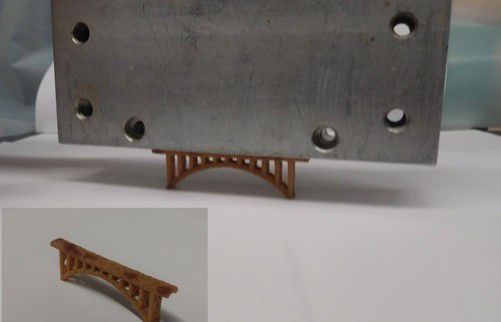America
energy
Researchers at the Ministry of Oak Ridge National Laboratory have designed a new polymer for use in binder jetting 3D manufacturing of silica sand, which is a3D printingmethod, used by industry for prototyping and part production. The printable polymer enables sand structures with complex geometries and exceptional strength, and is also soluble in water.

The study, published in Nature Communications, shows a3D printingThe Sand Bridge, a 6.5cm sand bridge can hold 300 times its own weight, a feat akin to 12 Empire State Buildings sitting on the Brooklyn Bridge.Binder jet printing process other than those used by industry3D printingThe method is cheaper, faster, and makes it possible to create 3D structures from a variety of powdered materials, with advantages in cost and scalability. The concept stems from inkjet printing, but instead of using ink, the printhead ejects a liquid polymer to combine powdered materials, such as sand, to build a three-dimensional design layer by layer. The bound polymers give the printed sand its strength.
Using polymer expertise, the team customized a polyethyleneimine (or PEI) adhesive that doubles the strength of sand parts compared to conventional adhesives. Parts printed by binder jetting are initially porous when removed from the print bed. They can be reinforced by infiltrating the design with a super glue material called cyanoacrylate, which fills the gaps.This second step provides an eight-fold increase in strength over the first step, making polymer sand composites stronger than any other and any known
architecture
Materials (including masonry) are stronger.
Parts formed with traditional adhesives are made denser by infiltrating materials such as super glues, but none have come close to the performance of PEI adhesives. The impressive strength of PEI adhesives stems from the way the polymer reacts with the cyanoacrylate during curing. This high-strength polymer-sand composite increases the complexity of parts that can be fabricated with binder jetting, enabling more complex geometries and expanding applications in fabrication, tooling, and construction.
(responsible editor: admin)


0 Comments for “New polymer 3D prints sand with super strength”